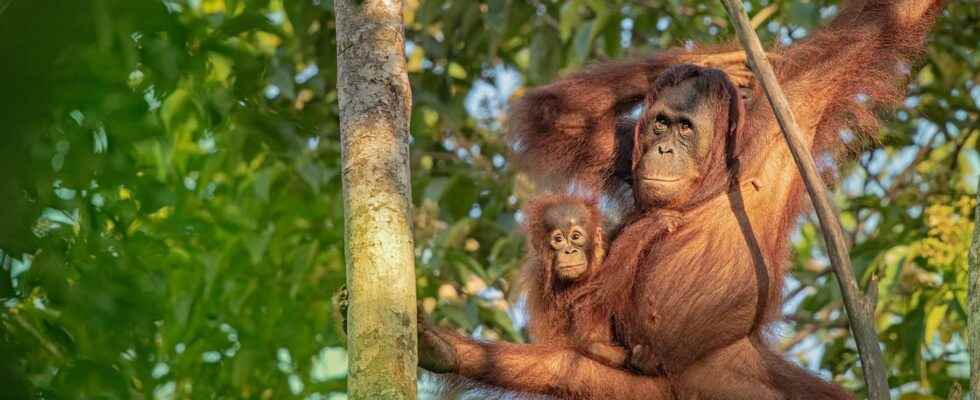“Bêtes de science” is like a collection of stories. Beautiful stories that tell the living in all its freshness. But also in all its complexity. A parenthesis to marvel at the treasures of the world. For this new episode, let’s meet one of our closest cousins: the orangutan.
The orangutan is a funny animal. He loves to walk from branch to branch. Thanks to his strong arms. In search of fruit orinsects. And even leaves to taste once placed on the treetops. One funny monkey, so close to us that the Malays gave it the name of“Man of the forest”.
Unfortunately today, it is hardly found in the wild except on Borneo Islands and Sumatra. The species is considered critically endangered. Or rather the genre. Since there are actually three distinct species of orangutans. Species that are mainly differentiated by where they live. Even though Borneo’s orangutans are said to be slightly smaller than others.
One of the peculiarities of orangutans is that they are the only great apes that do not live in groups. They are more of a loner. With the exception of females and their young. Like many mammalian mothers, orangutan mothers accompany their mini-selves until they know how to feed themselves, in particular. And among these great apesthere, it can take a long time. Up to nine years!
It must be recognized, in the offspring of the offspring, that finding food in their environment is not so simple. Little orangutans must learn to recognize and process more than 200 different foods. And many of them require several steps before the monkeys can taste them. Bark, for example, must be pulled from trees and then scraped with teeth to remove nutrient parts. Some foods even require orangutans to know how to use tools. As if to extract honey from beehives. The monkeys must know how to handle the stick.
Discreet teaching
In orangutans, thelearning is done by observation. To acquire the right skills, the little ones simply copy their mothers. This is what scientists have long thought. But such passivity astonished them, all the same. All the more coming from females who spend a lot of time with their offspring. However, it was only recently that researchers noted, by observing more precisely the behaviors of mothers, that they were in reality not that passive.
They seem, on the contrary, to adapt their behavior to the age and capacities of their mini-selves to put themselves within their reach. A teaching all in subtleties. Orangutan mothers are thus more patient when the little ones have to appropriate foods that are more difficult to recognize or more complicated to process. And this is with regard to foods that demand theuse of a tool that they are the most tolerant of young orangutans. On the other hand, there is no question for the baby monkey to beg for simple leaves. He must very quickly learn to pick them himself.
Remember that teaching skills to fellow humans is a fairly rare behavior in the animal kingdom. Even if it has already been observed in species very distant from each other. With their new observations, the researchers are adding one more species to the list. Orangutans exhibit at least some – if not all – of the cognitive, ecological, and social conditions that allow them to support this ability. What to emphasize once again that orangutans are … not so stupid!
Interested in what you just read?
.
fs11
